Lockheed Martin F-16I
SUFA "Storm"
[ Page I-2 ]
F-16 models in 1/32 scale
F-16I SUFA using the Academy kit
F-16 home
page 1
page 2
page 3
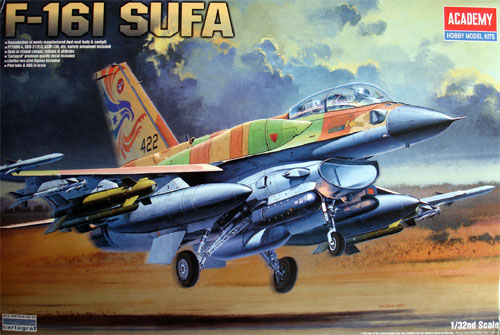
... continued from page I1....
The Academy
kit #12105 is a very good kit. For more details on the real SUFA plane,
look at page 1.
This kit from
Academy has many common parts as with their single seater F-16 CJ kit described
here....
Wolfpack
of Korea issued a SUFA cockpit detailset
#32030. It has a resin tub, two seats and smaller cockpit resin parts.
However, the additional details compared to the standard Academy SUFA kit
are not that many. Most noteworthy is slightly more detailed ACES ejection
seat section with ejection rails and some more detail at the central instrument
cover.
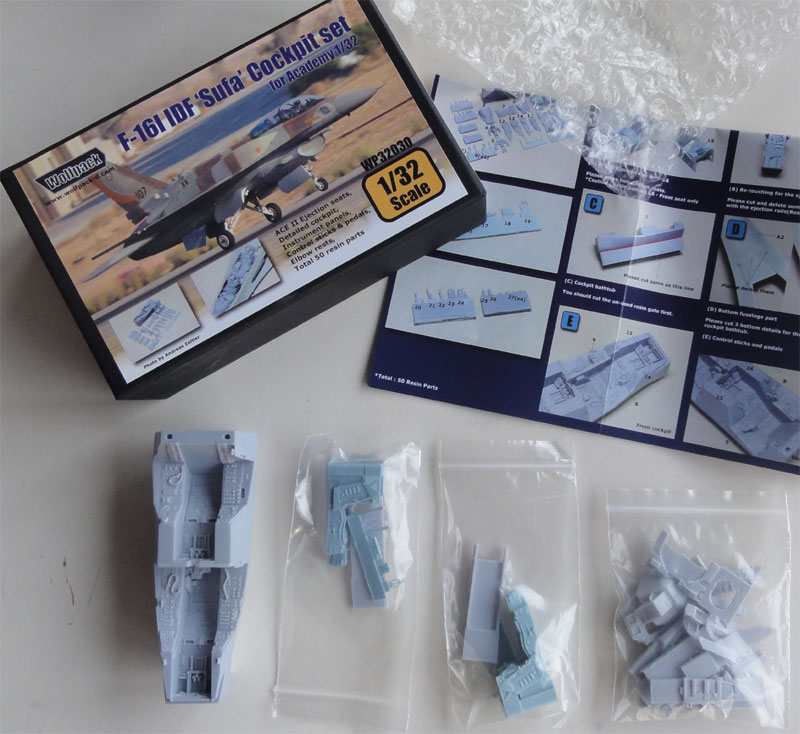
I will use only probably some parts
of this set.
Basic preparations
Almost no flash is present on this
excellent moulded 1/32 Academy kit, so only minor clean up is needed. Next,
some parts were given a coat of matt white to have better coverage like
the air tunnel intake.
NOTE: If you wish to have a detailed ammunition and gun bay on your two seater F-16 model, cut-out the upper fuselage panels now, look here for instructions...
![]()
Steps 1
- 4
The SUFA cockpit
area for the two seater is pretty well detailed and additional special
instrument panels are provided. and assembled as indicated in the instructions.The
main areas are dark grey. The ACES II seat is OK but straps are moulded
on (Remove these and make separate straps). You can use details sets like
Quickboost
for seats or Wolfpack for additional details.
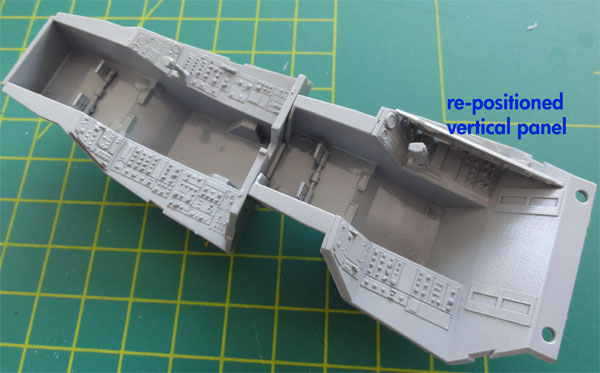
In the aft cockpit, the right side
panel K24 should be set a bit more vertical than as suggested in the kit
instructions. So trim this part and fit more vertical directly next to
the right instrument panel. Some trimming also is than needed at the rear
panel K18.
The small ejection pin marks in the
tub were filled with white glue.
.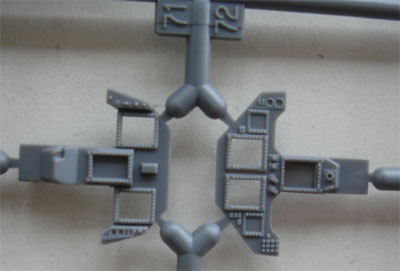 .
.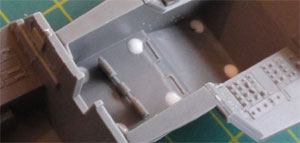
The main areas
in the cockpit are Fed.Standard FS36320 medium grey (using e.g. Humbrol
128 or Gunze Sangyo H307 acrylic) details like at the seat tubs. So,
the whole cockpit tub assembly was given first a coat of medium grey and
the black areas hand painted.  ..
..
(note.. above picture shows black
painted tub sidewalls, this is not correct for the SUFA; will be overpainted
medium grey later).
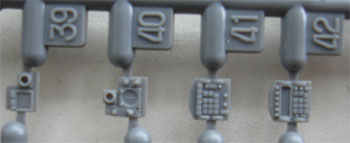 .
.
The instruments were are painted
black and the raised details were high lighted by simply SANDING off the
black paint in areas and by inscribing with a scriber the individual panels.
The same was done on the main central instruments, to be set in place later.
Tiny coloured details were are now added, not a lot of work here.
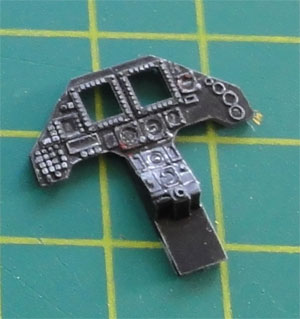 ..
..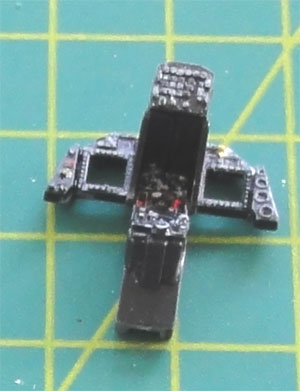
Step 5
The SUFA kit
has the appropriate small type F-16 intake but the spare parts include
the "big mouth" or older type F-16.
Unfortunately
an issue is still there on the small intake: on the Academy kit the distance
between the intake and the lower fuselage is too small. The RAM intake
and duct are barely visible and even worse.... on the real SUFA no RAM
intake is present at all. Widening up the gap and filling/smoothing the
RAM intake area is thus needed. (NOTE: I did not notice this error on my
first F-16 CJ build).
 ...
...
.....
real
SUFA
Academy intake
OK, how to fix this?
First, simply saw in a slot and bend
the lip a bit inwards as the SUFA does not have an RAM intake lip/slot!
This now enables bending the lips.
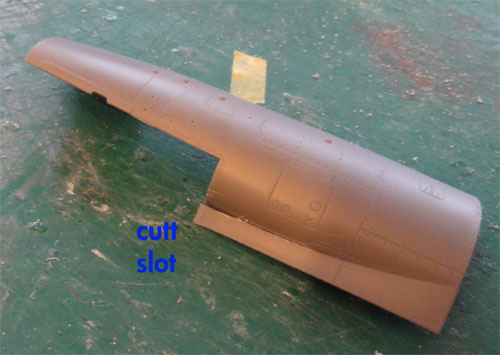
The intake was assembled now as per
instructions of step 5. I recommend not yet to fix the forward section
part D79 to avoid sanding damage still needed.
Tip: the small gaps in the intake
can later be filled with "TIPEX" correction fluid.
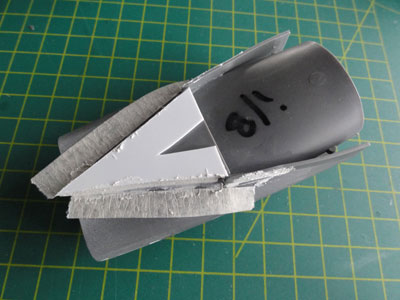
Next, a section of plastic card was
set on top of the main intake after assembly. This will enlarge the gap
between the intake and the fuselage later on as needed.
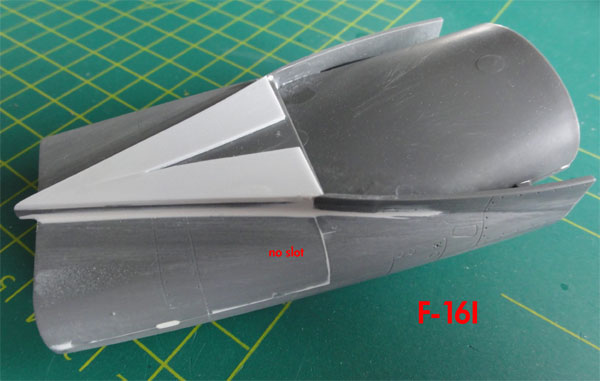
Set putty on the lips, let dry and
sand smooth.
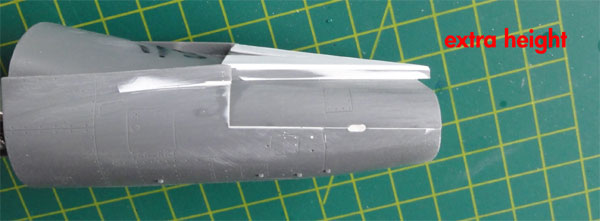
Now, let's move to the lower fuselage.
Cut out a section of say about 10
mm of the lower fuselage intake area. Make a triangular section of white
plastic card and insert in the area. Sand flush.
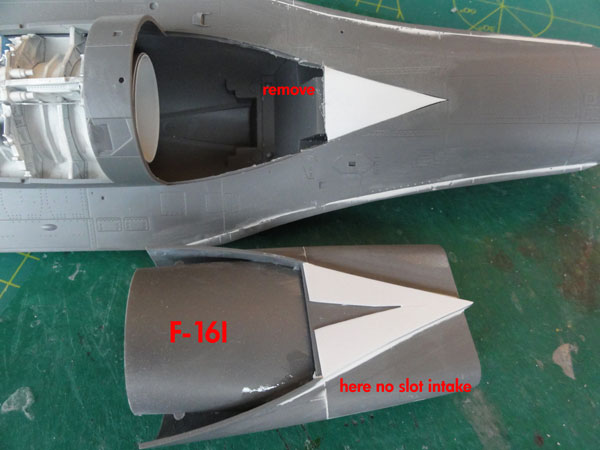
Do not yet fit the intake to the lower fuselage! Leave for later.
![]()
Steps 6-7
Main gear bay
can use some extra detail by adding tubing and hydraulics through stretch
sprue and some card. Some effort was put here to get a nice result. The
assembly got a white base coat and some painted details.
 bay still white, details to be painted later..
bay still white, details to be painted later..
Step 8
The intake
tunnel is a very nice feature as in the first Academy F-16 kit but with
for the SUFA indicated part H1 (which is different from the F-100 part
of the Academy F-16CG/CJ kit). It was needed to fit it now on top
of the main gear bay, although this will make aligning it later on with
the forward intake more difficult.
Skip step 9 for now!
Step 10
Please note that kit instructions
for the ammunition bay are not provided, but the parts of the F-16CJ are
still there should you wish to have this detail in your F-16B model. If
this is desired, cut out the bay panels and add the details. I opted not
to add the internal gun and bay detail. Look
here for the instructions.... .
The gun nozzle and fairing is better
now assembled and set in place as it can be better handled now. I used
the kit parts D67 + D68 which seem a little better and finer than SUFA
part K35.
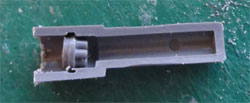
Step 11
Fitting in the cockpit tub can now
be done. Gaps need some filling using white glue.
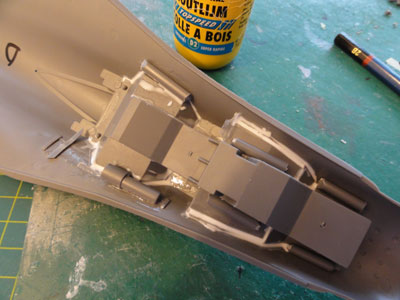
The lower and
upper fuselage parts are now joined. Take care to carefully align symmetrical
the main gear bay, exactly in the middle.
This is an
important stage and will require careful glueing. The end result is that
you will find that the fit at the forward fuselage needs filler and some
filler at the rear area.
![]()
As the upper and lower fuselage
halves are set aside to dry and to become a stiff assembly.
After 24 hours drying, it is now
time to set the prepared intake to the lower forward fuselage.

This requires quite some aligning
and may be some slight removal of material at the edges of the fuselage
intake gap. Force is needed with tape and clamps to close the gape between
all parts.
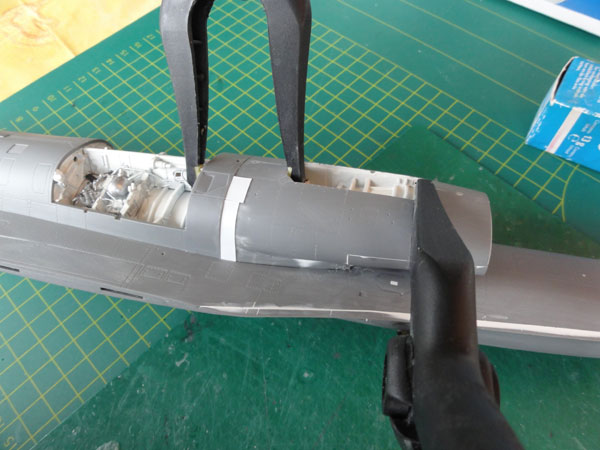
I could not achieve a flush assembly,
leave for a couple of hours to dry. Some thin card and putty is now needed
and followed by sanding to get a good result. This takes some effort, but
do it now as the model can now easily be handled.
![]()

(c) Copyright "designer"/ All rights reserved. Your comments are welcomed by webmaster

Created this page
November 27, 2010